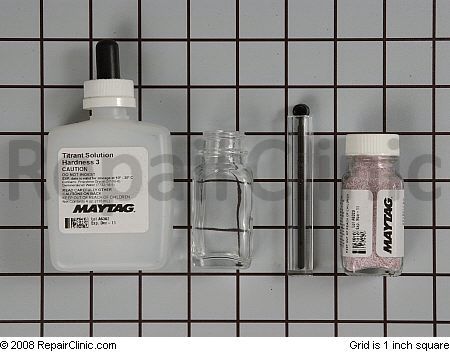Ralph, from Milwaukee, Wisconsin (IP address: 64.108.132.31), rang me up for live help on his Frigidaire dryer today. As with all chat conversations, the transcripts are saved and I’ve presented it here for your amusement and enlightenment.
Samurai Appliance Repair Man: hi, ralph. how can i help you?
ralph: hello
ralph: on afrigidaire dryer model fdg546resi i need to know where the two fueses [sic] are
Samurai Appliance Repair Man: ok, let me explain how i can help you with this in live help…
Samurai Appliance Repair Man: (below is the pre-written explanation of the Live Appliance Repair Help service offered here at Fixitnow.com that I inserted into the chat window.)
 I’m an appliance repair expert and I can help you fix your appliance right here, right now, while we’re chatting. During your live help consultation, I can post illustrations, diagrams, and tricks-of-the-trade, and point out the part(s) that you need to fix it yourself. To help recover the cost of offering live help, I need to charge a very modest consulting fee of only $15. Your live help consultation continues for as many separate chat sessions as it takes to completely solve your problem. It’s a great deal and you’ll save many times that amount by fixing it yourself with the help of an expert!
I’m an appliance repair expert and I can help you fix your appliance right here, right now, while we’re chatting. During your live help consultation, I can post illustrations, diagrams, and tricks-of-the-trade, and point out the part(s) that you need to fix it yourself. To help recover the cost of offering live help, I need to charge a very modest consulting fee of only $15. Your live help consultation continues for as many separate chat sessions as it takes to completely solve your problem. It’s a great deal and you’ll save many times that amount by fixing it yourself with the help of an expert!
When you click the button below to make your payment for your Live Appliance Repair Consultation, you’ll be taken to the secure Paypal site where you can safely enter your payment information. You can do this right now, while we’re still chatting. I’ll instantly receive notification of your payment and then we’ll go to work on your appliance. Usually, I can solve your problem in one session. But if it does require more sessions, there is no additional charge. Additionally, at the end of each chat, you’ll have the option of having a transcript emailed to you so you’ll have a permanent record of what we talked about. Let’s get started! ![]()
Samurai Appliance Repair Man: do you have any questions about how live help works?
ralph: well then i guess i will go to the libaray [sic] and get the manual and you can take your $15.00 cost and shove it
 As you can see, Ralph is suffering from an acute form of cranial-rectitis, cheesedork variation. This diagnosis is supported by Ralph’s naively mistaken notion that information on the internet, and especially live appliance repair help, should be free. Unfortunately, software makers and website hosting companies do not share in this delusion.
As you can see, Ralph is suffering from an acute form of cranial-rectitis, cheesedork variation. This diagnosis is supported by Ralph’s naively mistaken notion that information on the internet, and especially live appliance repair help, should be free. Unfortunately, software makers and website hosting companies do not share in this delusion.
Today’s Cheesedork Alert was brought to you by the letters K and Y.








